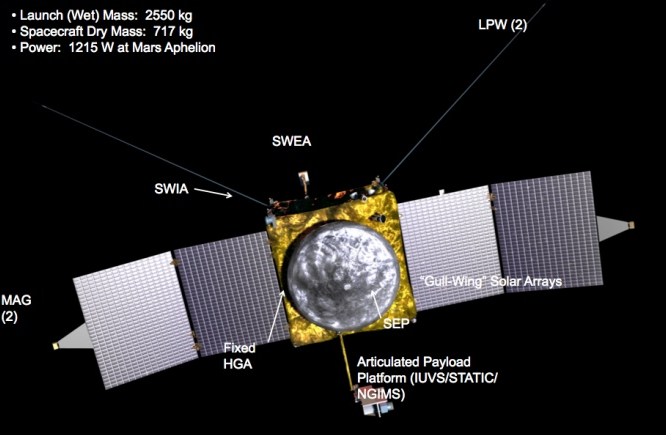Scheduled to launch late this year, the Mars Atmosphere and Volatile Evolution (MAVEN) will be the first mission devoted to understanding the upper atmosphere of Mars. The goal of MAVEN is to determine the Red Planet's history of the loss of atmospheric gases to space throughout time, which will provide answers to its climate evolution.

The MAVEN spacecraft. Image via nasa.gov.
When MAVEN begins its exploration to Mars, on board will be a sensitive magnetic-field instrument that was built and tested by a team at NASA's Goddard Space Flight Center. Because Mars does not possess a global magnetosphere, scientists believe that over billions of years, the lack of magnetic field might have allowed the solar wind to strip away the planet's protective atmosphere. Unlike Earth's global magnetic field, Mars only has patches of its magnetic field remaining in its crust. By measuring the current rate of escape to space and gathering information about the processes, scientists will be able to figure out how the Martian atmosphere evolved.
The MAVEN magnetometer, similar to an electronic compass, will measure Mars' magnetic field through a series of coils, each containing a metal ring wrapped around a core. The “flux gates,” which are the tool's sensors, are driven in and out of saturation by applied magnetic fields. The sensors will remain balanced if there is no ambient magnetic field, and if so, they'll go into saturation quicker in one direction than the other. The imbalance reveals the presence of an ambient field.
By measuring sections of Mars' magnetic field, the magnetometer will help scientists understand the planet's atmosphere, since it will allow them to see where the atmosphere is protected and where it's open to solar wind.
It will take 10 months for the spacecraft to reach our neighboring Red Planet, and MAVEN will go into orbit around Mars in September 2014.
Story via nasa.gov.
Advertisement





